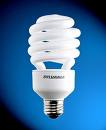Maglev Turbines Developed

Renewable energy produced from the wind has garnered much attention and support in recent years but is often criticized for its low output and lack of reliability. But now a super power wind turbine has come along that may be just what the renewable energy industry needs. The MagLev wind turbine, which was first unveiled at the Wind Power Asia exhibition in Beijing, is expected take wind power technology to the next level with magnetic levitation.
Magnetic levitation is an extremely efficient system for wind energy. Here’s how it works: the vertically oriented blades of the wind turbine are suspended in the air above the base of the machine, replacing the need for ball bearings. The turbine uses “full-permanent” magnets, not electromagnets — therefore, it does not require electricty to run. The full-permanent magnet system employs neodymium (”rare earth”) magnets and there is no energy loss through friction. This also helps reduce maintenance costs and increases the lifespan of the generator.
Maglev wind turbines have several advantages over conventional wind turbines. For instance, they’re able to use winds with starting speeds as low as 1.5 meters per second (m/s). Also, they could operate in winds exceeding 40 m/s. Currently, the largest conventional wind turbines in the world produce only five megawatts of power. However, one large maglev wind turbine could generate one gigawatt of clean power, enough to supply energy to 750,000 homes. It would also increase generation capacity by 20% over conventional wind turbines and decrease operational costs by 50%. If that isn’t enough, the maglev wind turbines will be operational for about 500 years!
Construction began on the world’s largest production site for maglev wind turbines in central China on November 5, 2007. Zhongke Hengyuan Energy Technology has invested 400 million yuan in building this facility, which will produce maglev wind turbines with capacities ranging from 400 to 5,000 Watts. In the US, Arizona-based MagLev Wind Turbine Technologies will be manufacturing these turbines. Headed by long-time renewable energy researcher Ed Mazur, the company claims that it will be able to deliver clean power for less than one cent per kilowatt hour with this new technology. It also points out that building a single giant maglev wind turbine would reduce construction and maintenance costs and require much less land than hundreds of conventional turbines. The estimated cost of building this colossal structure is $53 million.
by Mahesh Basantani at Inhabitat.com
Labels: Alternatives












